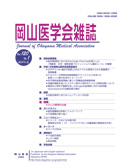

Journal of Okayama Medical Association
Published by Okayama Medical Association<Availability>
Full-text articles are available 3 years after publication.
Permalink : http://escholarship.lib.okayama-u.ac.jp/16346
Studies on motion sickness caused by high curve speed railway vehicles Report II, Evaluation of the swing and its effects on physiological function.
Ueno, Mitsuo
Published Date
1983-08-31
Abstract
This study was conducted to examine the physical characteristics of the swing induced by high curve speed railway vehicles, and the effects of the swing on physiological function. The physical characteristics of the swing were evaluated by measuring the vibration acceleration level (VAL) on the floor and counting the collisions of billiard-balls in rectangular boxes (billiard ball method). Physiological function was evaluated by measuring postural sway, and performing a one-leg test and a performance test on the train conductors. The results are summarized as follows: 1) Horizontal VAL values in both high curve speed railway vehicles and older-type trains were below the threshold limit value (TLV) proposed by the International Organization for Standardization (ISO), as were vertical VAL values. 2) A higher frequency of billiard ball collisions was observed in high curve speed railway vehicles in both the horizontal and longitudinal directions than in the control trains. Especially, the difference between two trains became greater at horizontal in the curve track section. 3) Consequently, it was considered that the billiard ball method was more adequate for indicating the occurrence of motion sickness than the VAL measurement. 4) The measurement of postural sway and the one-leg test were not recognized as an effective methods for indicating the occurrence of motion sickness induced by high curve speed railway vehicles. 5) Lower deviation values in both performance test I and II were observed among conductors in high curve speed railway vehicles than in the control trains. Especially, there was a statistically significant difference between the two types of trains in the course of test II, which had more emphasis on marking off designated letters than test I. 6) It was considered that the performance test was a more adequate method of evaluating the changes in physiological function than the measurement of postural sway and the one-leg test.
Keywords
振子電車
球を使用した動揺測定法
振動加速度測定
パーフォーマンステスト
前庭機能検査
ISSN
0030-1558
NCID
AN00032489
